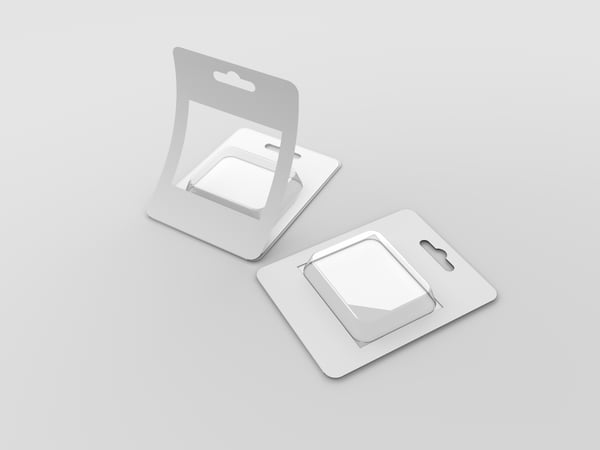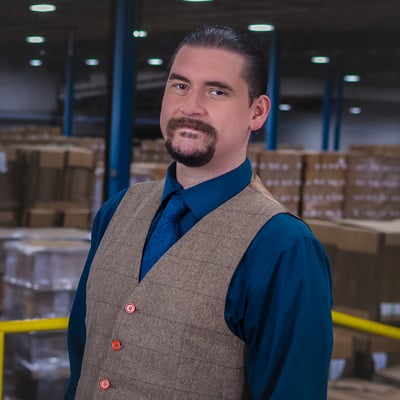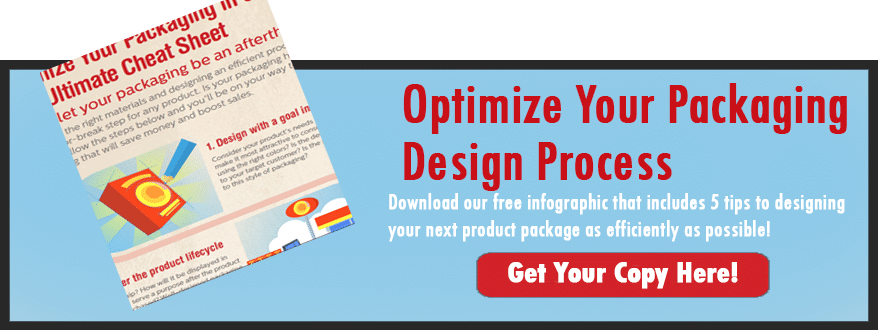Industrial Packaging Industry Forecasts: The 82 Billion Dollar Industry
Packaging Materials | The Business of Packaging | Packaging Psychology
With demand for industrial packaging supplies steadily growing year after year by 2.9%, we expect the industry to be around $980 billion by 2022. What dynamics have lead to this growth you may ask?
The ongoing growth is in part due to changing lifestyles which in turn has created greater demand for various packaging products across multiple segments of the packaging industry.
If packaging companies are to meet the demands of this industry, they must expand their offerings and run multiple product lines in order to meet the rising needs of our consumer base. Major market drivers include advances in packaging technology, complex product production, and on going investments into R&D.
What Products Are Driving Growth?
Blister packaging alone is set to see huge growth over the next few years. As one of the worlds most commonly used packaging supplies, demand for these simple but effective products will only see continued demand as time goes on.
Blister packaging AKA bubble packs, are excellent for the protection of products from dynamics including humidity and contamination for long time frames. "Blister" is a reference to the sealed products which rest inside a cavity or "pocket" that has been applied to a paper, aluminum or film substrate. Blister packaging is mainly used for consumer goods, foods and over-the-counter drugs.
Why use blister packaging? From preserving the product integrity to protecting the contents inside, these tamper proof, packaging supplies are a perfect fit for literally millions of products. Blister packaging is created by thermoforming or cold forming technologies as leveraged by the plastics industry.
How Can You Optimize Your Packaging? Check out our free cheat sheet to designing your next package with efficiency!
Blister packaging is extremely popular in the fishing industry with various lures, bobbers and large hooks often utilizing blister or skin packaging to keep said objects in place and hooks away from finger tips.
Other applications for blister packaging includes, hardware, tools, dental products, batteries, pharmaceuticals and etc. Chances are, there is something in your house that utilizes packaging similar to the picture below.

Two Empty Blister Packs
Where Is The Packaging Industry Growing?
Another strong contributor to the continued growth of the packaging industry as a whole also includes the explosive growth of flexible packaging, with a noticeable uptick in the GCC region.
The market for flexible packaging products in the GCC region has a projected value of about US$ 1.6 Billion.
Flexible packaging is any type of packaging that is created from flexible and easy to manipulate materials that have no hard structure. Unlike hard plastics, flexible packaging products actually conforms and/or bends around the contour of the various products contained within.
Flexible packaging refers to everything from bags, pouches and liners to plastic, film substrates and aluminum foil. Metalized paper or films are also commonly used in flexible packaging products. These little wonders of the packaging world have become the fastest growing packaging products for the packaging industry as a whole.
This is in part due to the fact that there is virtually endless possibilities when it comes to what can be packaged in a flexible packaging application.
The GCC region in particular is seeing explosive growth for flexible packaging supplies and is showing signs of continued strong growth over the next several yeas. This is primarily caused by an on-going growth in the consumer sectors including perishables, retail items, end user products, over-the-counter drugs and other small items.
Due to continually increasing levels of urbanization, changes in food consumption, and an ever growing expatriate population, demand is constantly increasing. With continued evolution in the retail formats including supermarkets, the GCC region is showing signs of continued growth for years to come.
Interested In Optimizing Your Packaging Supplies?
In addition to blister packaging and flexible packaging options, we expect to see growth in the top 5 most common packaging materials which include:
Paper
HDPE/PET/Rigid Packaging.
LDP/LLDPE/ or Flexible Packaging. ...
Aluminum
Glass
And while new innovations such as LOOP continue to change the landscape of the packaging world, we can all rest assured that traditional packaging supplies such as shrink wrap will continue to be staples of this ever evolving industry.
As demand for products like clam-shells, blister packs and stand up pouches continues to grow, you can be sure that technologies and innovations will bring about new opportunities for more efficient packaging.
The Role Of Luxury Packaging
Another contributor to the quickly growing industry of packaging supplies is the smaller niche market of "luxury packaging"
What on earth is luxury packaging, you ask?
Luxury packaging is a group of specialty products involving the design, development, and production of packaging and display items, for brands dealing exclusively in luxurious products.
Aesthetics and brand imagery are both extremely vital parts of luxury packaging products which while much more expensive, have been proven to attract customers who are willing to spend extra on the products contained inside. This is primarily due to the high quality, visual impact and air of sophistication involved with said packaging.
Luxury packaging adds value to the contents inside and provides other benefits as well. It greatly increases brand awareness, customer connectivity through personalized items, functionality, and sets the product apart from competitors in a way "normal" packaging cannot. Its all about enhancing the consumer experience.
Luxury packaging seems to have a bright future as it continues to catch the attention of affluent buyers in various demographics. Consumption of these high end packaging products is expected to hit 9.9 billion tons with growth of 3.1% in the next 6-12 months.
But What About The Environment?
While luxury packaging is a very strong albeit niche market, one major con of this particular part of the industry is sustainability and environmental impact.
When you use multiple kinds of high end packaging supplies like corrugated cardboard, plastic, metal and fur all in the same packaging design, recycling tends to take a back seat to profitability and brand awareness.
So where is the luxury niche currently at in regards to environmental concerns? Smithers Pira has this to say...
"Prestige brands and their customers are often more concerned about the look rather than the eco-friendliness of packaging. Customers' expectations for luxury packaging are much different from the general market, with packaging seen as an important part of the product itself. From cosmetics to confectionary, the entire basis of these products is centred on multi-material packaging which contributes to the overall feeling of 'luxury'. Therefore, much of this type of packaging includes metallised plastic, metallised glass and many other types of materials; which, while connoting quality and expense, are very difficult to recycle.
The task of producing environmentally friendly packaging that is also luxurious is therefore a challenging one. Responsible packaging means a whole host of new issues for the luxury packaging market, such as practicality, cost, material choice, aesthetics and maintaining brand image. Due to any one of these reasons, it has often been the case in the past that sustainable packaging solutions have been dropped halfway through the process."
While various luxury brands are attempting to make efforts to find a balance between high visibility luxury packaging and sustainability by obtaining Sustainable Packaging Coalition status, others simply are not.
The customer base for these products and the companies that produce them often leave environmental concerns behind. In order to focus on ultra-fancy products with a significant "wow-factor" during the unboxing experience, some brands are simply not interested in losing customers over sustainability concerns.
For now, it is really up to the consumer or end-user of the packaging products purchased to properly recycle their packaging after the unboxing process is complete. It's up to the brand to increase awareness on how to properly recycle and promote a sustainable packaging mindset.
About Nathan Dube
As the Digital Marketing Specialist at Industrial Packaging, I am honored to create content for such a phenomenal company and work with one of the greatest teams in the Packaging Industry. Whether creating a video, writing blog posts or generating other pieces of content and multimedia, I am always excited to help educate and inspire our prospects and clients to reach their highest potential in regards to their packaging processes and needs.





